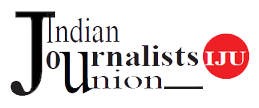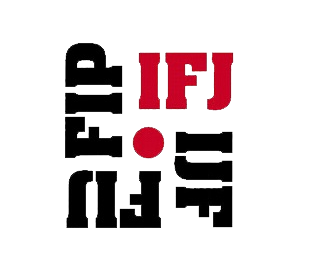- Sabina Inderjit
It’s been exasperating for me to say the least. On the one hand, women have made enormous strides in the media but on the other, they seem to have shied away from being active in its unions. They may have enrolled themselves as members of unions (a far smaller number than their male counterparts in the profession), but forceful participation and a leadership role sadly eludes them. While they can be faulted for not taking on this challenge and being content in their ‘networks’, the unions, mostly male-dominated, need to take some of the blame.
The glass ceiling needs to be broken here. Will women in the media do so entirely on their own or do the unions too need to walk the extra mile with them--that's the big question.
There is no denying the fact that the unions in India have been facing steadily a declining membership over the past two decades because of the contract system that's been introduced in a large number of media organisations. So even though the number of women journalists, be it in print, electronic or the online media has been on the rise, these increasing numbers are not reflected in a greater number among them joining the unions. Further, there is a clear divide between the metros and towns/cities/districts--where in the latter the numbers are only a handful.
I'd also like to draw your attention to the fact that while much has been written and even 'surveys' conducted on the ‘status of women journalists in India', very little is known about their role and standing in unions. Try doing a Google search and you are likely to draw a blank or at best you'll come across a small section related to unions in a larger report.
Over the years, I have realised that status of women in the media is quite the same globally, varying perhaps only to some degrees. But the gap becomes wider when it comes to women’s participation in unions. For example, the Unions in Europe have a far larger number of women as their members but the same cannot be said of those in the Asia Pacific and particularly in South Asia.
It was encouraging to come across an IFJ-EFJ survey report on Women in Journalists’ Unions in Europe. It stated: women make up almost half of the freelance and permanent membership in Unions. However, while women make up the majority of the young generation of journalists in union membership, this category’s involvement in union leadership positions remains very limited. What was heartening was the summing up that said: “As much as women need unions to support their career and working conditions, unions need women to strengthen their voice....At a time of crisis where unions are confronted with a decrease of membership and a struggle to bargain collectively, the presence of women in union membership and their representation in unions’ leadership is an asset to sustain union strength...”.
As against this, a quick read of the report by IFJ Asia Pacific on Women Journalists in the Region reconfirmed that unions have discouragingly low figures for women members. Worse, the report admits that women’s role in unions and organizations continues to be sidelined, pointing to the need to increase the visibility of women in decision-making roles in these bodies.
The meeting ground for the two regions is that the Unions do need to address similar challenges such as ‘extra job precariousness, the unyielding gender pay gap, the struggle to reconcile work and family life and the blocked access to leading roles in the media.’ The challenge would thus be to ‘make these spaces women-friendly and conducive to a more active role for women.’
Who then should take on the mantle of ensuring greater participation of women in Unions? I am of the firm view that both women journalists and the leadership of unions need play their respective critical roles. To women colleagues I would say: it is one thing to criticise and find faults with the unions and another to rectify these and take on the challenge by becoming agents of change within the unions. Don’t just share your concerns, success stories or raise issues within your ‘networks’ but make your place within the Unions and make your voice in a larger forum. More importantly, be a force to reckon with just as you would be one through your network. Sensitise your male colleagues to gender issues and strive to ensure these are addressed. Surely, woman being the weaker sex is passé in our profession in present times.
And to the Unions’ leadership I would like to say: "Don’t just throw up your hands in helplessness and complain that women have their problems. That they have family constraints and can’t devote that extra time which may be required or that they're simply not interested etc. Instead, reach out to them, make the effort to enrol them, provide an environment conducive for them to feel it is their platform too and encourage them to play a leading role.
The question to be asked is whether efforts have been made in right earnest to enrol more women, and if so what, more so when membership of unions is witnessing a sharp decline? For one, do our journalists unions in different States across the country have a Gender cell? Do they focus on the issue of gender equality? I am afraid the answer to these questions would be a big no in the case of most unions. There is, therefore, an urgent need to set up Gender cells even though the Union may have just a handful of women members. Provide them physical space in the union office. Take up the special needs of women workers with the managements such as maternity leave, facility of crèche at workplace, transport during night shift, equal pay for equal work and even separate toilets for women, etc. And, like some unions, the leadership could consider changing their statutes to offer quotas for women members in the governing body. It’s a different matter though that I personally am not in favour of this, but if it can ensure better participation so be it.
I must confess that it has been rather frustrating these past two decades to find just a handful of women or quite often no woman at the newspaper organisations, State and national level meetings of the unions. At the international level, IFJ affiliate unions are requested to ensure gender balance of their delegation at say a Congress. Its Gender Council is trying hard to mainstream gender issues but both in the unions and within the IFJ itself, there has been a lack of will and support by the Unions in developing regions, and that women too shy away from Unions. Indeed, if only women were active, the fight for gender equality would have been easier.
So while Gender cells in all unions would be a step forward, its members must work hard for their success. At the same time, Unions must campaign and campaign hard to convince women journalists to join unions. And, one important campaign could well be on insisting upon media managements to set up sexual harassment committees at the workplace. The Visakha guidelines as spelt out by the Supreme Court in 1977 have remained largely on paper in most media organisations and worse many women are not even aware of these. Neither has the Sexual Harassment of Women at Workplace (Prevention, Prohibition and Redressal) Act, 2013 changed the situation.
I do recollect a report on the status of women journalists in India by the Press Institute of India which stated: One of the most provocative survey results was the relativity in the perception of what comprises sexual harassment amongst media women; Character assassination and slandering is a common ploy to increase women’s insecurities and impair professional accomplishments; women in the media are vulnerable to harassment from colleagues who come drunk for the night shift and the night staff leaving pornographic pictures and messages on their computers. Making sexist, vulgar comments is common in the editorial rooms of newspapers as also so-called humorous or snide remarks on women colleagues’ work. Most women hesitate to speak of sexual harassment, but are more than willing to speak of the sexist remarks they are subjected to at the workplace... And while guidelines exist, they are seldom implemented, enforced or even known.
I wonder how many have even read the Act and perhaps it would be worthwhile to highlight some specifics. As per the statute, ‘sexual harassment’ includes unwelcome sexually tinted behaviour, whether directly or by implication, such as physical contact and advances; demand or request for sexual favours; making sexually coloured remarks, showing pornography, or any other unwelcome physical, verbal or non-verbal conduct of a sexual nature. The Act places the onus on employers to make this definition known to all its employees, male or female and requires an employer to set up an ‘internal complaints committee’ (“ICC”) at each office or branch, of an organization employing 10 or more employees, to hear and redress grievances pertaining to sexual harassment.
I do know for a fact that a few women journalists have complained of sexual harassment by their superiors to their managements but sadly justice eluded them. I wonder whether it would have been different had women been active in the unions. However, the recent Tehelka and Pachauri cases which hit the headlines have brought the issue to the forefront. A campaign for the formation of the ICCs should at least be taken up by the unions which could be a step towards confidence-building measures with the women workforce. Targeted action could yield desired results—of both women and men colleagues joining hands to strengthen unions.
I cannot but end with the ‘Count Us In’ campaign of the International Trade Union Confederation. It engages men and women to bring about change: more women in trade union leadership positions and concerted efforts to organise more women in unions. Its cites reasons such as: Far more women are likely to join a union, as members, activists and leaders, when unions reflect the gender diversity in their leadership; Acknowledging and valuing women’s leadership capacities is an investment in democracy and in the strength of our movement; More women in leadership enhances the ability of unions to reach out to, organise and mobilise more women members and activists; By promoting women leaders, unions gain capacity to build workers’ power and, to win better rights for all workers;...
It’s time for Indian women journalists to take on the challenge and the male-dominated Unions to pave way. Did I hear a loud ‘Count Us In’?




